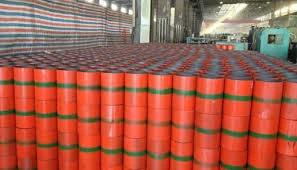- Afrikaans
- Albanian
- Amharic
- Arabic
- Armenian
- Azerbaijani
- Basque
- Belarusian
- Bengali
- Bosnian
- Bulgarian
- Catalan
- Cebuano
- Corsican
- Croatian
- Czech
- Danish
- Dutch
- English
- Esperanto
- Estonian
- Finnish
- French
- Frisian
- Galician
- Georgian
- German
- Greek
- Gujarati
- Haitian Creole
- hausa
- hawaiian
- Hebrew
- Hindi
- Miao
- Hungarian
- Icelandic
- igbo
- Indonesian
- irish
- Italian
- Japanese
- Javanese
- Kannada
- kazakh
- Khmer
- Rwandese
- Korean
- Kurdish
- Kyrgyz
- Lao
- Latin
- Latvian
- Lithuanian
- Luxembourgish
- Macedonian
- Malgashi
- Malay
- Malayalam
- Maltese
- Maori
- Marathi
- Mongolian
- Myanmar
- Nepali
- Norwegian
- Norwegian
- Occitan
- Pashto
- Persian
- Polish
- Portuguese
- Punjabi
- Romanian
- Russian
- Samoan
- Scottish Gaelic
- Serbian
- Sesotho
- Shona
- Sindhi
- Sinhala
- Slovak
- Slovenian
- Somali
- Spanish
- Sundanese
- Swahili
- Swedish
- Tagalog
- Tajik
- Tamil
- Tatar
- Telugu
- Thai
- Turkish
- Turkmen
- Ukrainian
- Urdu
- Uighur
- Uzbek
- Vietnamese
- Welsh
- Bantu
- Yiddish
- Yoruba
- Zulu
what is the difference between casing and tubing?
Understanding the Difference Between Casing and Tubing in Oil and Gas Production
Understanding the Difference Between Casing and Tubing in Oil and Gas Production
Casing is a large-diameter pipe that is installed in the wellbore after drilling has taken place. Its primary function is to provide structural integrity to the well and protect it from external pressures and environmental factors. Casing lines the walls of the well to prevent cave-ins and groundwater contamination. It is cemented into place to ensure that the geological formations around the well do not collapse, and to isolate different layers of rock or fluid within the wellbore. Various types of casing, such as surface casing, intermediate casing, and production casing, serve different depths and purposes. For instance, surface casing is installed immediately after drilling to secure the uppermost section and protect freshwater aquifers.
what is the difference between casing and tubing?

On the other hand, tubing is a smaller-diameter pipe that runs inside the casing. Its primary role is to transport oil or gas from the production zone to the surface. Once production begins, the tubing serves as a conduit for the extracted fluids, facilitating their movement to the surface, where they can be collected or processed. Tubing is often equipped with various completion equipment, such as pumps or valves, which optimize production efficiency. Unlike casing, tubing is designed to be removed and replaced as needed, making it more versatile in terms of maintenance and repair.
In summary, the key difference between casing and tubing lies in their functions casing supports the well structure and prevents contamination, while tubing is responsible for the flow of hydrocarbons to the surface. Both components are integral to the successful operation of a well, and understanding their roles can provide valuable insights into the complexities of oil and gas production. Effective management of casing and tubing operations is essential for ensuring safety, efficiency, and environmental protection in the drilling process. As technologies advance, the materials and designs of both casing and tubing continue to evolve, helping to meet the increasing demands of the energy industry.
-
Tubing Pup Joints: Essential Components for Oil and Gas OperationsNewsJul.10,2025
-
Pup Joints: Essential Components for Reliable Drilling OperationsNewsJul.10,2025
-
Pipe Couplings: Connecting Your World EfficientlyNewsJul.10,2025
-
Mastering Oilfield Operations with Quality Tubing and CasingNewsJul.10,2025
-
High-Quality Casing Couplings for Every NeedNewsJul.10,2025
-
Boost Your Drilling Efficiency with Premium Crossover Tools & Seating NipplesNewsJul.10,2025







